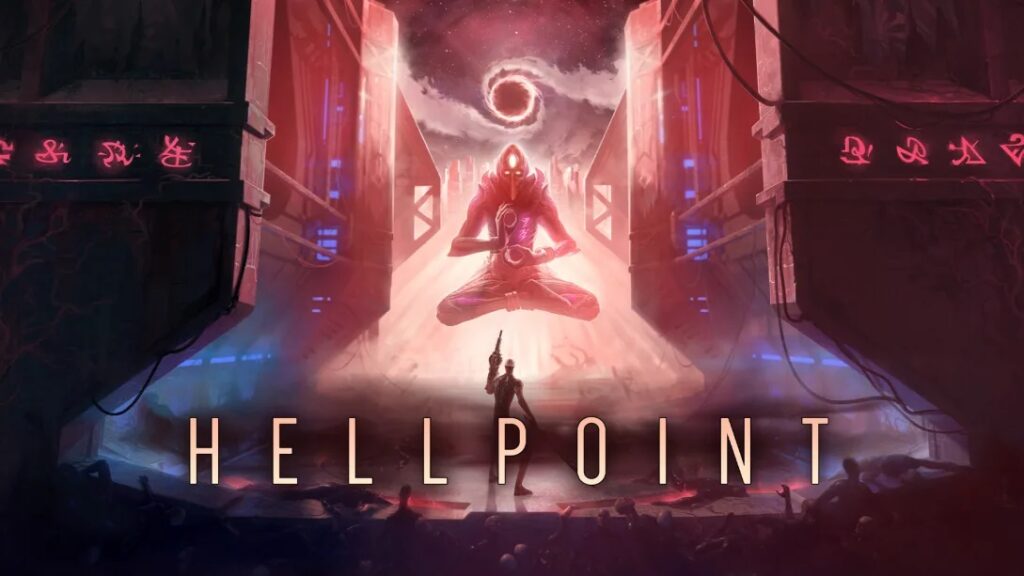
I’ve determined that I hate myself. It’s nothing personal. It’s just that my brain actively likes to torture me. It’s been that way for years, most notably since the release of Demon’s Souls for the PS3 by From Software. I play incredibly difficult games games and I am terrible at them, slowly, incrementally progressing over time as I never quite manage to master the combat systems entirely but squeak by anyway. I’ve done it for the Souls series, for Mortal Shell, for any number of grueling titles. Now I’m back to another vicious third person action game with Hellpoint for the Switch. Originally released last summer by Cradle Games and publisher tinyBuild, Hellpoint is, well, hard. Now I don’t mean that it’s impossible. But it’s hard to describe accurately. It’s hard to understand what is going on. It’s hard to master the controls, at least on the Switch. It’s hard to get a grasp on the game in general. In short, it’s hard.
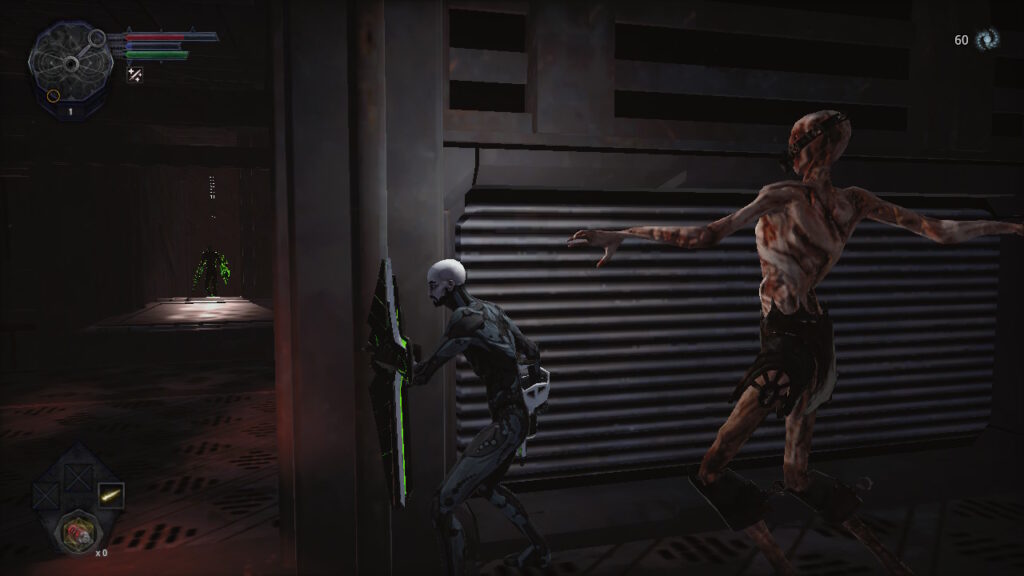
In Hellpoint, I would love to tell you what’s going on, but I really have no idea. There’s no significant introduction that sticks with you, no narrative woven into the gameplay. It’s easy to tell where the inspiration for Hellpoint originates. The game looks like a cross between Dead Space, Demon’s Souls, and Doom with its technologically-inspired semi-occult aberrations wandering throughout the levels of the game. But there’s no Dead Space style narrative here, no significant plot elements weaving your explorations together most of the time, and it’s impossible to know what to expect. It’s unfortunate but Hellpoint really gives you no clue as to what’s happening or why, or even how to accomplish various tasks, use weapons or items, or really anything whatsoever. You simply run about, hoping you can figure out what to do next before you’re inevitably slaughtered.

If that sounds like fun to you, you’re a very different person than I am. The investigative nature of games like Demon’s Souls was tempered with clever level design and placement of helpful items, the occasional cryptic tip or explanation on how to use items, and so forth. The narrative was slim but present. In Hellpoint, there’s just no telling what’s happening or why, and this breeds frustration almost immediately upon beginning. For example, after you die, sometimes (and not every time, for no discernible reason) green ghosts of your character appear. Initially I thought the game was online and I was getting PvPed, but it turns out that they’re just vicious killer afterimages of your last life that you have to defeat. Unfortunately, they’re highly skilled and can easily slaughter you in seconds if you’re not expecting them, and once they see you, they actively hunt you! Suffice it to say that this is a ridiculously irritating mechanic. As a side note, the game does have a multiplayer mechanic, but I didn’t try it out during the course of this review.
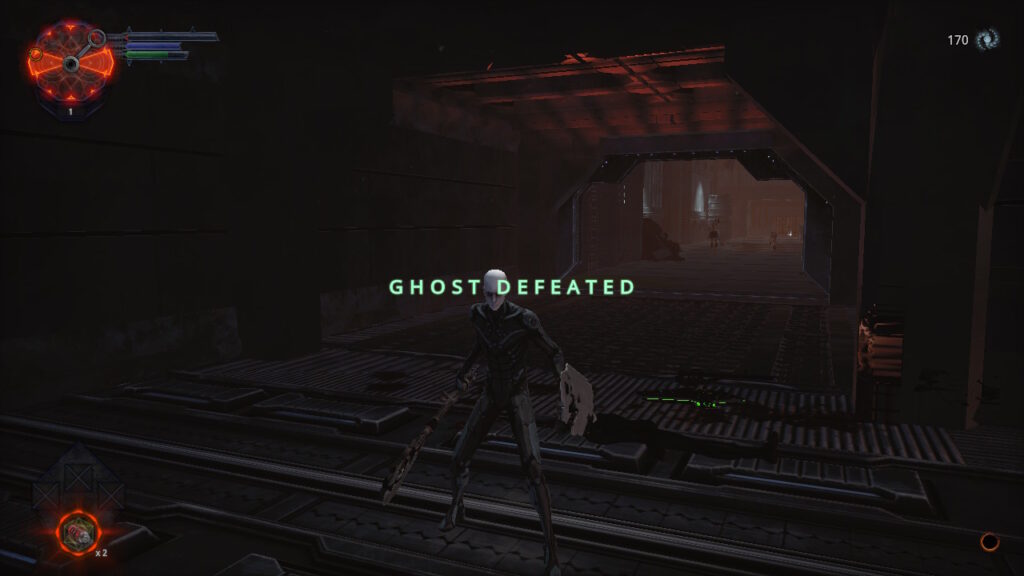
Random gigantic killer enemies appear out of nowhere too, slaughtering you in a single hit if you try to engage them. Again, I don’t know why, but it doesn’t win me over as a player. The solution? Run away! In fact, most of the time, you can run away from almost everything in Hellpoint, defeating the purpose of having those enemies even present themselves. The level design is so open that you can just avoid most creatures. It’s a series of bizarre choices that lead to an immediately unbalanced game.
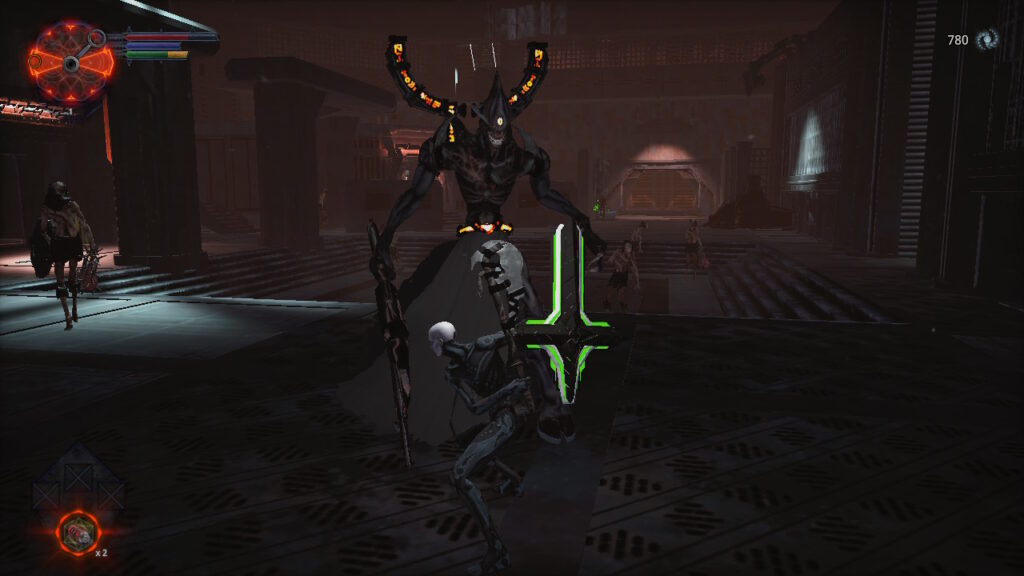
Controls in Hellpoint are similarly weak. They’re designed to emulate the Souls series, with normal and hard hits, dodge mechanics, shield blocks, and even a d-pad item use menu. The devs added in some guns and jumping mechanics as well, just to shake things up, but as the level design is so open, what’s the point? Just go a different route! You can equip weapons well above your level, but it’s unclear how leveling works, points are assigned, or even why you can equip weapons that are too powerful in the first place. They don’t work very well, so there’s a practical reason not to, but it’s honestly a hassle even managing equipment, and even worse when you realize that you can move while the menu is open but you can’t attack or dodge, so you end up running away or dying because you hit the wrong button and didn’t close a menu.
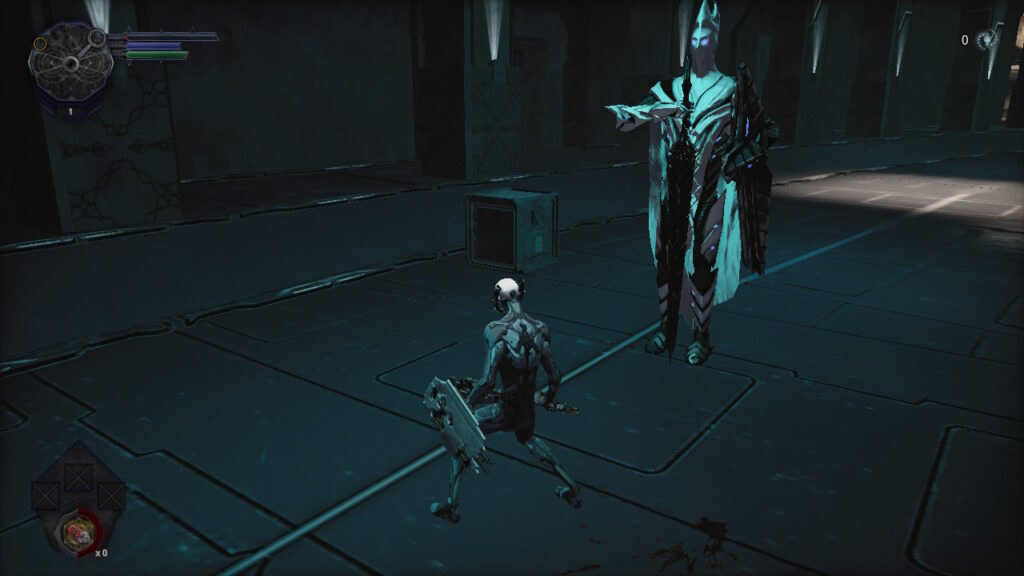
Hellpoint’s combat response timing has virtually no leeway either, so if you don’t time each blow to the millisecond, even the weakest enemies can slaughter you. Again, this mirrors the Souls series, but in a bad way. In Souls, response time is crisp and you have a bit of leeway in combat. Make a mistake in Hellpoint and chances are it isn’t a survivable one. Double tap a button by accident and you’ve lost half a health bar or straight-up died. It’s beyond frustrating to try to experiment with fighting new types of enemies and simply be swatted down over and over, waiting for extended load times for a respawn, only to go back and still have no idea how to fight a tough enemy and die in a few seconds.
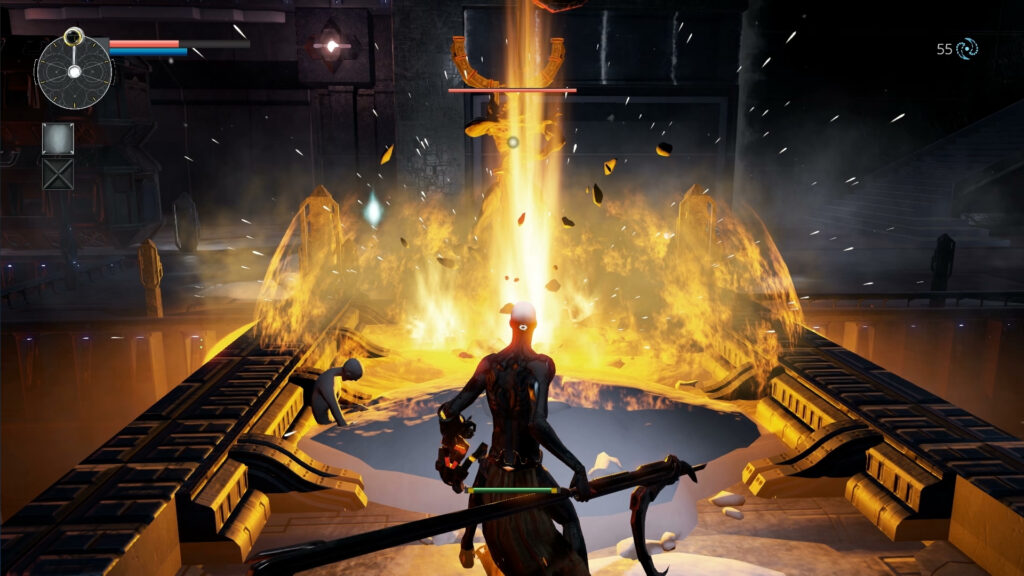
Let’s toss the breach system in here too. You respawn from breaches, essentially save points. Unfortunately they tend to be infrequent, often requiring extended bursts of combat and survival through tough enemies just to reach the next breach. You can open up shortcuts in levels to get places faster eventually, and breaches are capable of fast travel, but it’s hard to access. Chances are good that before you manage to get this whole system up and running efficiently, you’re going to get frustrated. I know I did. Respawning far from bosses (unlike the Souls series usually), weird super-enemies, brutal ghosts, and a bunch of rejects from a failed Clive Barker game do not make for fun gameplay.
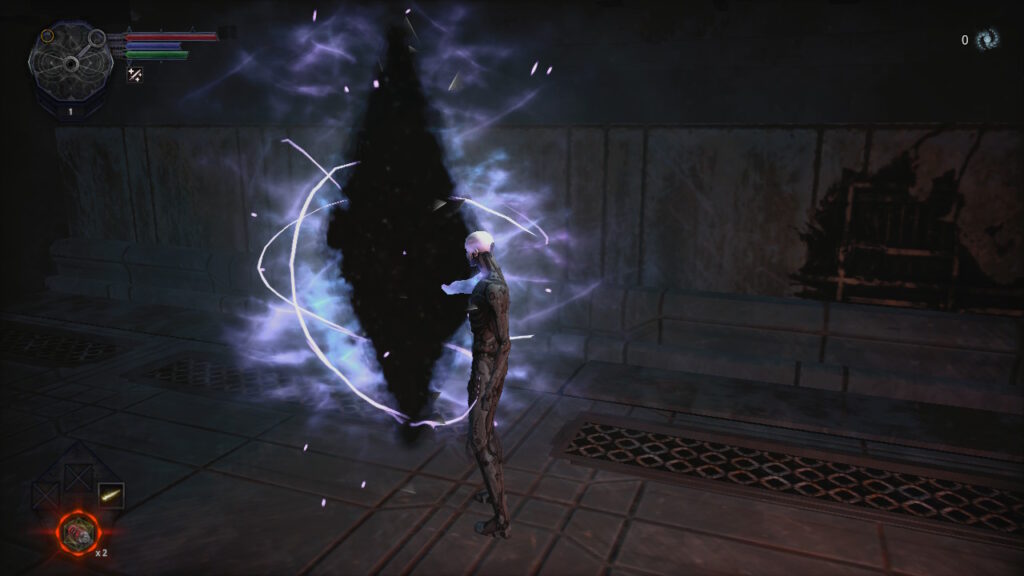
On the Switch, Hellpoint looks terrible. In comparison with other versions, there is absolutely no contest at all. The textures are muddy and the overall feel is very bland with limited color palettes and an overall oppressive darkness. The game looks noticeably better on other platforms, as you’ll see in some of the screen shots in this review. Enemies have neat designs but you generally only see them for a few seconds before they die because you ran at them full board or they absolutely slaughtered you. There’s really not much time to stop and smell the space station (I’m sure it smells of decay anyway). There are some neat vistas here and there, and some excellent architectural designs, but the game feels empty and unpopulated overall, with huge empty rooms and limited background set pieces aside from the occasional stack of boxes. Hellpoint does manage to create some great sound effects and the directional nature of the growly magic space zombies is cool, but it isn’t revolutionary. The soundtrack is suitably subtle and creepy too, but nowhere near the level of a game like Dead Space or Silent Hill.

The conclusions regarding Hellpoint are unsurprising. It’s a sub-par Souls-like game that misses the mark on narrative, controls, and background graphics. It’s playable, sure, and has a wide variety of items and weapons, but that doesn’t make a game on its own. As a sci-fi horror game, vague science fiction without backstory doesn’t sell the sci-fi angle much, and horror requires a certain amount of fear or tension. Sure, you’ll be dreading dying again and waiting for the fairly long load times on the Switch, but that’s not real horror. I wanted it to be more than it was and Hellpoint simply underwhelmed me. At $35 for a digital copy, that’s not a feeling you want to have. If you’re a hardcore 3rd person action fan and dying for a fix, Hellpoint might be for you, but for the rest of us, save your cash and if you’re really curious, check it out on a deep discount sale, especially on the Switch version.

This review was based on a digital copy of Hellpoint provided by the publisher. It was played on a Nintendo Switch in both docked and undocked modes and played equally well on both. Hellpoint is also available for Xbox One, PS4, and PC on Steam. Press kit photos were used in addition to gameplay photos, accounting for the disparity in image resolution. The ones that look terrible are the Switch version of the game.

